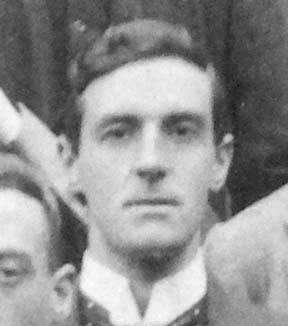


 تاريخ الرياضيات
تاريخ الرياضيات
 الرياضيات في الحضارات المختلفة
الرياضيات في الحضارات المختلفة 
 الرياضيات المتقطعة
الرياضيات المتقطعة
 الجبر
الجبر
 الهندسة
الهندسة 
 المعادلات التفاضلية و التكاملية
المعادلات التفاضلية و التكاملية 
 التحليل
التحليل
 علماء الرياضيات
علماء الرياضيات |
Read More
Date: 27-5-2017
Date: 24-5-2017
Date: 31-5-2017
|
Died: 20 August 1950 in Edinburgh, Scotland

George Carse's father was George Carse (born in Duns, Berwickshire about 1856) who was a painter and decorator. His mother was Jane Carse (born in Glasgow about 1855). George Alexander Carse had two younger sisters, Magdalene (born about 1883) and Jane (born about 1888).
George Carse was brought up in Edinburgh, living at 120 Lauriston Place. He studied at the Normal School (E. C.) from age five to age eleven. Then in 1891 he entered George Heriot's School, Edinburgh, being dux of the school in 1898. In June 1898 he passed Mathematics, French, Latin, and English at the Higher level in the Scottish Leaving Certificate examinations.
Then, after having passed the Preliminary Examination, he first matriculated at the University of Edinburgh in October 1898. There he studied mathematics under George Chrystal, physics under P G Tait, and chemistry under Crum Brown. In 1898-99 he took the Ordinary Classes in Senior Mathematics and Political Economy; in session 1899-1900, Chemistry, Natural Philosophy, and Latin; then in 1900-01 and 1901-02 he took the Intermediate Honours Classes in Natural Philosophy and in Mathematics; taking the Advanced Honours Classes in the same two subjects in 1901-02 and 1902-03. He was awarded an M.A. with First Class Honours in Mathematics and Natural Philosophy in April 1903, and also received a B.Sc. (Pure) in Mathematics, Natural Philosophy and Chemistry in the same year. Among a number of outstanding students in his class was Joseph Wedderburn.
During 1903-4 Carse undertook research in physics at Edinburgh and also acted as an assistant to J G MacGregor. He then went to Cambridge spending the years 1904-7 in Emmanuel College and the Cavendish Laboratory. He attended lectures by Sir Joseph Larmor and Sir Robert Ball, and worked with Sir J J Thomson. Carse then returned to Edinburgh where he was appointed as Lecturer in Natural Philosophy. He was awared a D.Sc. (Pure) in 1908 from Edinburgh. During World War I his war service was spent in the Royal Arsenal, Woolwich between 1916 and 1918. Returning to his post in Edinburgh, Carse was promoted to Reader in Natural Philosophy in 1928. He retired in 1948.
We note that the Mitchell Lectureship on Methods of Statistics was founded in 1925 and endowed by the businessman and president of the Glasgow Chamber of Commerce, Sir George Arthur Mitchell. the first Mitchell Lecturer was George Alexander Carse in 1925.
Carse joined the Edinburgh Mathematical Society in session 1902-03 while he was working in the Physical Laboratory of the University of Edinburgh. He was elected to the Royal Society of Edinburgh on 21 November 1904, his proposers being James Gordon MacGregor, George Chrystal, Cargill Gilston Knott, William Peddie.
An obituary, written by A Melville Clark, appears in the Royal Society of Edinburgh Year Book 1951, pages 9-11.
We give a version of this obituary at THIS LINK.
A report of his death in The Scotsman of 22 August 1950 reads:-
A well-known Edinburgh educationist, Dr George Alexander Carse, has died suddenly. A former dux of George Heriot's School, he graduated M.A. with honours and B.Sc. at Edinburgh University in 1903. He then proceeded to Emmanuel College Cambridge, and returned to Edinburgh in 1907 when he joined the University Staff as a lecturer under Professor Macgregor. In the following year he was awarded the degree of D.Sc. Dr Carse was promoted Reader in the Department of Natural Philosophy in 1923 and three years later was admitted a member of the Senatus. He was a director of studies in the Faculty of Arts from 1922 and in Science from 1941. Dr Carse retired on September 30, 1948. His distinguished services were not confined to the university. For many years he took a leading part In the work of George Heriot's Trust, and from 1934 till 1947 he held the position of vice-chairman of the Board of Governors. Dr Carse was first elected to the Board in 1927 as a representative of Edinburgh University and he filled a number of important offices. From 1931 until 1940 he was convener of the Foundationers' Committee, and thereafter convener of the Finance Committee until 1943. His knowledge of Trust Orders, bursary regulations, University courses, and all matters educational was of great value to the Governors.
They were also well served by him as their representative on outside bodies, particularly the Board of Governors of the Edinburgh and East of Scotland College of Agriculture, on which he served for 14 years, retiring in 1942, and the Heriot-Watt College, in which he took a special interest.



|
|
|
|
التوتر والسرطان.. علماء يحذرون من "صلة خطيرة"
|
|
|
|
|
|
|
مرآة السيارة: مدى دقة عكسها للصورة الصحيحة
|
|
|
|
|
|
|
نحو شراكة وطنية متكاملة.. الأمين العام للعتبة الحسينية يبحث مع وكيل وزارة الخارجية آفاق التعاون المؤسسي
|
|
|